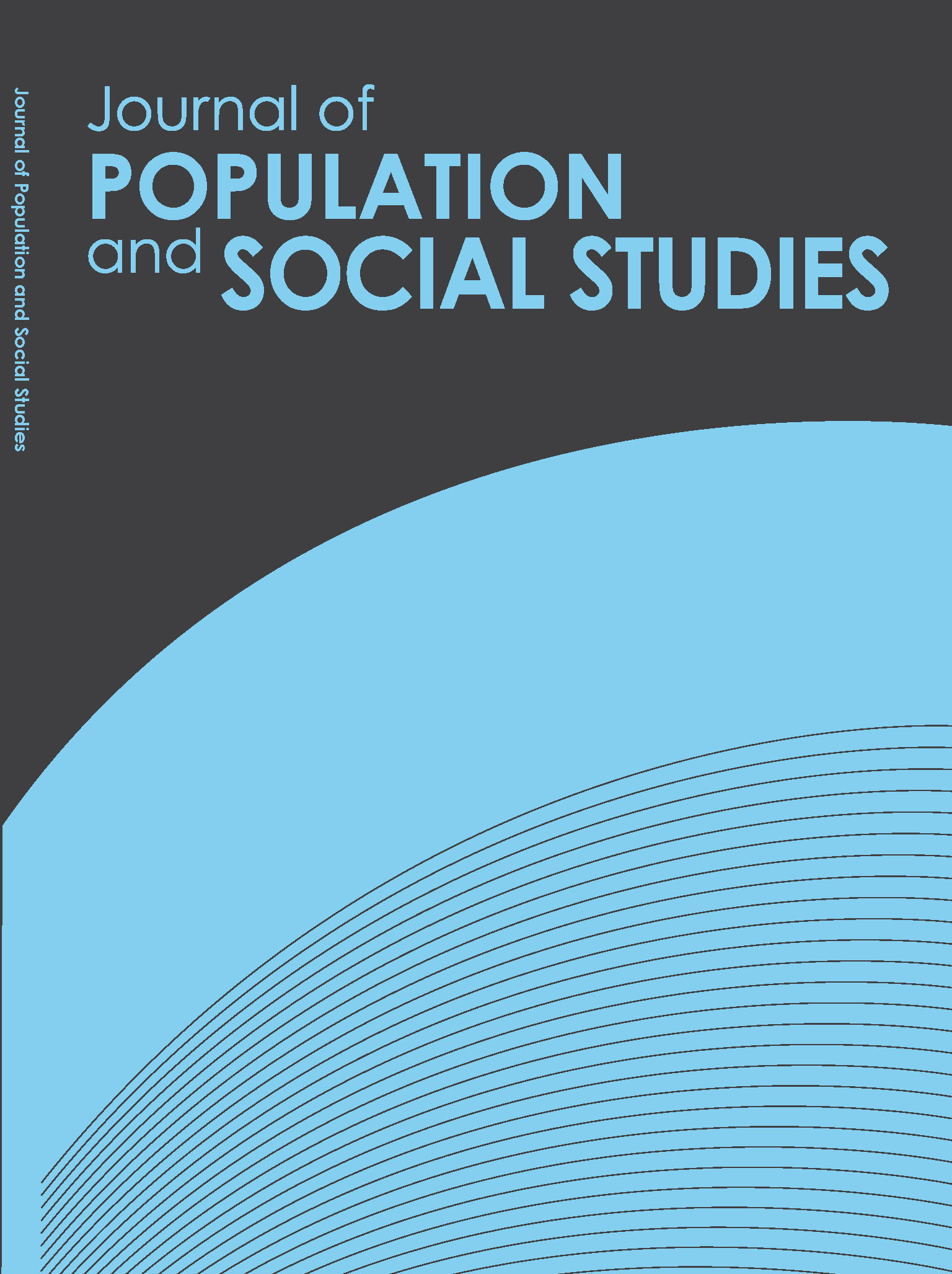Indirect Estimation of Net Reproduction Rates for the Districts of Selected States of India
Main Article Content
Abstract
Article Details
References
• Bhat, P. N. M. (1996). Contours of fertility decline in India: A district level study based on the 1991 Census. In K. Srinivasan (Eds.), Population Policy and Reproductive Health. New Delhi: Hindustan Publishing Corporation.
• Brass, W. & Coale, A. J. (1968). Methods of analysis and estimation. In William Brass et al. (Eds.), The Demography of tropical Africa. Princeton: Princeton University Press.
• Chandra Sekar, C. & Deming, W. E. (1949). On a method of estimating birth and death rates and the extent of registration. Journal of American Statistical Association, 44(245), 101-115.
• Choudhury, L. & Sarma, R. (2011a). Generation of model life tables for the major states of India. International Journal of Statistics and Analysis, 1(4), 419-441.
• Choudhury, L. & Sarma, R. (2011b). Indirect estimation of district level life expectancy at birth in India. Indian Journal of Public Health Research and Development, forthcoming.
• Coale, A. J. (1981). A reassessment of world population trends. In International Population Conference, Manila 1981, 1983 proceedings, International Union of for the Scientific Study of Population.
• Guilmoto, C. J. & Rajan, S. I. (2002). District level estimates of fertility from India’s 2001 census. Economic and Political Weekly, 37 (7), 665-672.
• Gunasekaran, S. & Palmore, J. A. (1984) Regression estimates of the gross reproduction rate using moments of the female age distribution. Asia and the Pacific Census Forum, 11 (1), East-West Population Institute, East-West Center, Honolulu, Hawaii.
• http:// www.iipsindia.org/pdf/05_b_09cchep3.pdf, (retrieved on 15th Dec, 2011).
• http:// www.china-profile.com/data/fig_WPP2010_NRR_1.htm, (retrieved on 24th August, 2011).
• Nair, P. S. (2010). Understanding below-replacement fertility in Kerala, India. Journal of Health, Population and Nutrition, 28(4), 405-412.
• Namboodiri, K. (1991). Demographic Analysis: A Stochastic Approach. USA: Academic Press Inc.
• Palmore, J. A. (1978). Regression estimates of changes in fertility, 1995-60 to 1965-75, for most major nations and territories. Paper of the East-West Population Institute, no. 58, East-West Center, Honolulu: Hawaii.
• Parasuraman, S. & Ram F. (1988). Estimation of fertility for the district of Gujarat: An analysis 1981 Census. Mumbai: Reprint of International Institute for Population Sciences.
• Preston, H.S, Heuveline, P. & Guillot, M. (2003). Demography-Measuring and Modeling Population Processes (First Indian Reprint). UK, Blackwell Publishers Limited.
• Preston, S. H. (1983). An integrated system of demographic estimation from two age distributions. Demography, 20(2), 213-26.
• Registrar General of India. (1989). Fertility in India: An analysis of 1981 census data. Occasional Paper No 13 of 1988, New Delhi: Controller of Publications.
• Registrar General of India (1997). District level estimate of fertility and child mortality
• for 1991 and their interrelations with other variables. Occasional Paper No 1 of 1997, New Delhi: Controller of Publications.
• Rele, J. R. (1967). Fertility Analysis Through Extension of Stable Population Concepts. Berkeley: Institute of International Studies, Westport, Connecticut: University of California, Re-published by Greenwood Press.
• Rele, J. R. (1987). Fertility levels and trends in India, 1951-81. Populaion and Development Review, 13(3), 513-30.
• Shryock, H. S. & Seigel, J. S. (1976). Methods and Materials of Demography. New York: Academic Press.
• United Nations, (1983). Indirect Techniques for Demographic Estimation, Manual X. Population Studies, 81.


